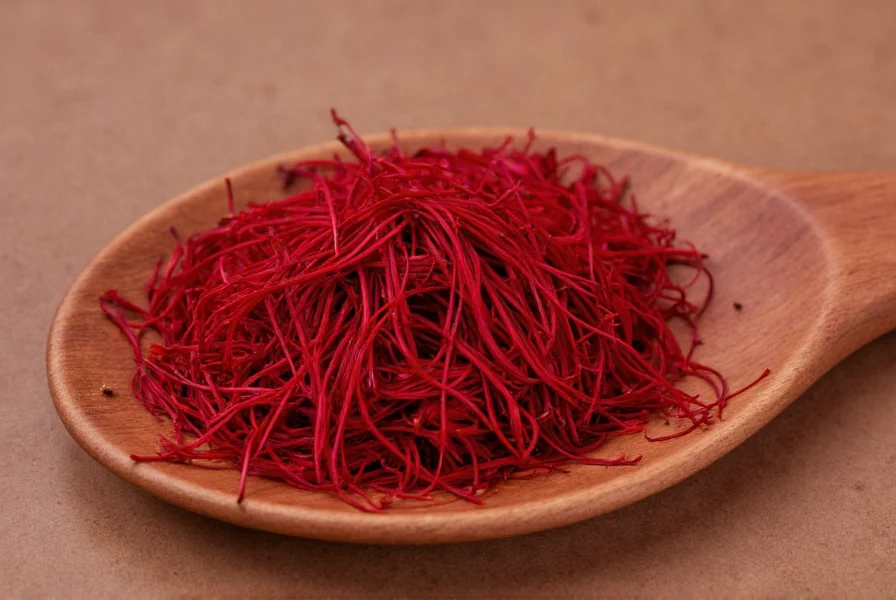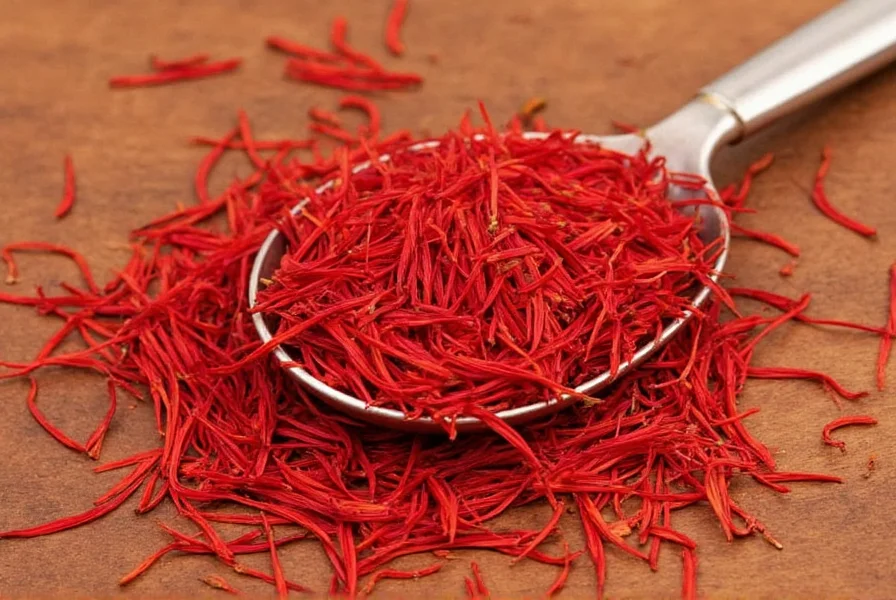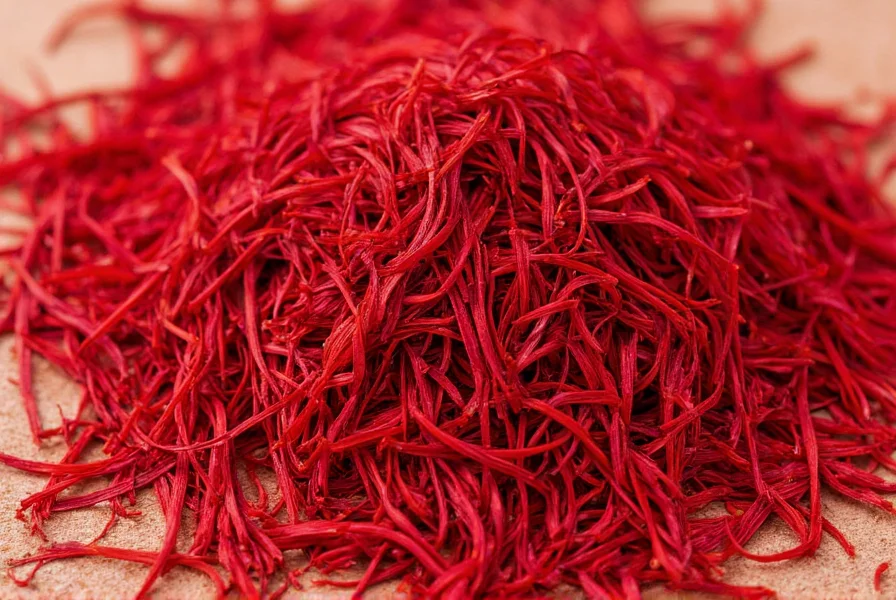Buying saffron requires careful consideration to ensure you're getting authentic, high-quality product. As the world's most expensive spice by weight, genuine saffron attracts significant counterfeiting. This guide provides essential knowledge for making informed purchasing decisions when looking for saffron for sale.
Understanding Saffron Grading and Quality Standards
Saffron quality is scientifically measured using the ISO 3632 standard, which evaluates three key properties:
| Quality Parameter | Measurement Method | Grade A (Superior) | Grade B/C (Lower Quality) |
|---|---|---|---|
| Coloring Strength | UV-Vis Spectrophotometry | ≥190 (Category I) | 150-189 (Category II/III) |
| Aroma Strength | Chemical Analysis | ≥70 | 50-69 |
| Bitterness Level | Taste Evaluation | ≥80 | 60-79 |
When evaluating saffron for sale, always request the ISO certification documentation. Premium saffron (Category I) should have a crocin content above 190, indicating superior coloring properties essential for culinary applications. Lower grades often mix in yellow styles or other additives to increase weight.
How to Identify Authentic Saffron
Spotting genuine saffron requires examining several physical characteristics. Follow this verification process when considering saffron purchases:
- Visual inspection: Authentic threads are deep crimson with a slight orange hue at the stigma end. Avoid uniformly red threads (often dyed substitutes).
- Texture test: Genuine saffron feels slightly brittle but not powdery. Rub a thread between fingers—it should leave a golden-yellow stain, not immediate red coloring.
- Water test: Place threads in warm water. Real saffron releases color gradually over 15-20 minutes, creating a golden-yellow infusion. Counterfeits discolor water immediately.
- Aroma assessment: High-quality saffron has a distinctive honey-like fragrance with hay notes. Chemical odors indicate adulteration.

Where to Buy Saffron: Trusted Sources
Finding reliable saffron for sale requires knowing which sources maintain quality standards. Consider these options:
- Specialty spice merchants with transparent sourcing: Look for businesses that specify harvest dates, origin regions, and provide batch testing results
- Certified producers from traditional growing regions: Iranian, Spanish, and Kashmiri saffron producers with geographical indication (GI) certification
- Reputable online marketplaces with verified seller programs: Platforms requiring ISO documentation and third-party testing
Avoid purchasing saffron from general marketplaces without verification, discount websites offering "premium" saffron below $3/gram, or sellers who only offer powdered product. The best saffron for cooking always comes in thread form with visible structural integrity.
Saffron Pricing: What to Expect
Understanding legitimate saffron price per gram prevents falling for counterfeit products. Genuine pricing reflects the extraordinary labor required:
- Harvesting requires 150,000-200,000 crocus flowers for just one pound of saffron
- Each flower produces only three stigmas, hand-picked at dawn
- Proper drying requires precise temperature control to preserve compounds
Current market rates for authentic saffron:
- Grade I (ISO 3632): $8-15 per gram
- Grade II: $5-8 per gram
- Grade III: $3-5 per gram (often includes significant yellow style)
If you encounter saffron for sale priced below $3/gram, it's almost certainly adulterated. Be wary of "premium" claims at suspiciously low prices—this represents the most common saffron scam.
Proper Storage Techniques for Purchased Saffron
After finding quality saffron for sale and making your purchase, proper storage maintains its value. Follow these guidelines:
- Store in airtight, opaque containers away from light and moisture
- Maintain temperatures below 77°F (25°C)—refrigeration extends shelf life
- Use within 6 months for peak flavor, though properly stored saffron remains usable for 2 years
- Never store near strong-smelling foods as saffron readily absorbs odors

Avoiding Common Saffron Purchasing Mistakes
Many consumers make critical errors when searching for reliable saffron suppliers. Steer clear of these pitfalls:
- Purchasing powder exclusively: Saffron powder is the easiest form to adulterate. Always buy whole threads and grind as needed.
- Ignoring harvest dates: Saffron degrades over time. Opt for products with clear harvest or packaging dates within the last year.
- Trusting color alone: Counterfeiters easily dye substitutes. Combine visual inspection with water and aroma tests.
- Overlooking packaging quality: Authentic saffron requires moisture-proof, light-resistant containers—not flimsy plastic bags.
When evaluating potential purchases, request documentation about the saffron grading system used by the seller. Reputable vendors willingly share ISO test results and origin verification.
Conclusion: Making Informed Saffron Purchases
Finding authentic saffron requires knowledge and vigilance. By understanding quality indicators, pricing expectations, and verification methods, you can confidently select genuine product when searching for saffron for sale. Remember that exceptional value doesn't mean low price—it means getting what you pay for with proper documentation and quality assurance. Invest time in researching potential sellers, verify their claims through independent testing when possible, and always prioritize thread integrity over convenience. The distinctive flavor and aroma of genuine saffron make the careful purchasing process worthwhile for discerning cooks and culinary enthusiasts.
Frequently Asked Questions
How can I verify if saffron is authentic before purchasing?
Perform the water test: place 3-4 threads in warm water. Genuine saffron gradually releases golden-yellow color over 15-20 minutes while maintaining thread structure. Counterfeit saffron immediately discolors water red and dissolves. Also check for proper documentation including ISO 3632 grading certificates and origin verification from the seller.
What's the difference between Spanish, Iranian, and Kashmiri saffron?
Iranian saffron (constituting 90% of global production) offers strong coloring strength at moderate prices. Spanish saffron typically has more aroma but less coloring power. Kashmiri saffron features exceptionally dark threads with balanced coloring and fragrance but commands premium prices. All can be high quality when properly graded by ISO 3632 standards, regardless of origin.
Why is saffron so expensive compared to other spices?
Saffron's high cost stems from its labor-intensive harvesting process. Each crocus flower produces only three stigmas, which must be hand-picked at dawn before the flowers open. It takes approximately 150,000 flowers to yield just one pound of saffron. The delicate threads require careful drying and processing to preserve their volatile compounds, contributing to the premium pricing of authentic saffron.
How much saffron should I expect to pay for genuine product?
Authentic saffron costs $5-15 per gram for ISO 3632 Grade I product. Prices below $3/gram almost always indicate adulteration. Remember that a little genuine saffron goes a long way—a single gram contains approximately 460 threads, sufficient for 15-20 dishes. When evaluating saffron price per gram, consider that extremely low prices represent the most common indicator of counterfeit product.
Can I grow my own saffron to save money?
While possible to grow saffron crocus (Crocus sativus) in suitable climates, commercial production remains impractical for most home growers. Each plant produces only 3 stigmas per flower, with harvesting requiring predawn collection of blooms that last just one day. You'd need approximately 50-60 bulbs to yield one gram of saffron—making home production economically unviable compared to purchasing from established growers who benefit from economies of scale.











 浙公网安备
33010002000092号
浙公网安备
33010002000092号 浙B2-20120091-4
浙B2-20120091-4